Abstract
1. On the basis of both in vitro and in vivo experiments fluvoxamine has been characterized as a potential anti-depressant drug with almost exclusively 5-hydroxytryptamine (5-HT) uptake inhibiting properties. 2. Fluvoxamine is effective in inhibiting 5-ht uptake by blood platelets and brain synaptosomes. Due to inhibition of the membrane pump the compound prevents 5-HT depletion by the tyramine-derivatives H 75/12 and H 77/77. As a result of the interference with the neuronal re-uptake mechanism for 5-HT, fluvoxamine produces a decreased 5-HT turnover in the brain. Effects of 5-hydroxytryptophan (5-HTP) are potentiated in mice and in combination with pargyline, fluvoxamine induces 5-HT-like behavioural effects. 3. In contrast to tricyclic antidepressants, noradrenaline uptake processes are either unaffected or only slightly inhibited by fluvoxamine. The noradrenaline depleting effects of tyramine derivates are not influenced by fluvoxamine. Reserpine effects, such as ptosis are affected only at very high doses of the test compound. The antagonism by fluvoxamine of the reserpine-induced lowering of the pentamethylenetetrazole convulsive threshold can be regarded as due to an effect upon 5-HT uptake. In contrast to the effects of desmethylimipramine and imipramine, no stimulatory effects are found in rats when rapidly acting reserpine-like compounds are given following a dose of fluvoxamine.
Full text
PDF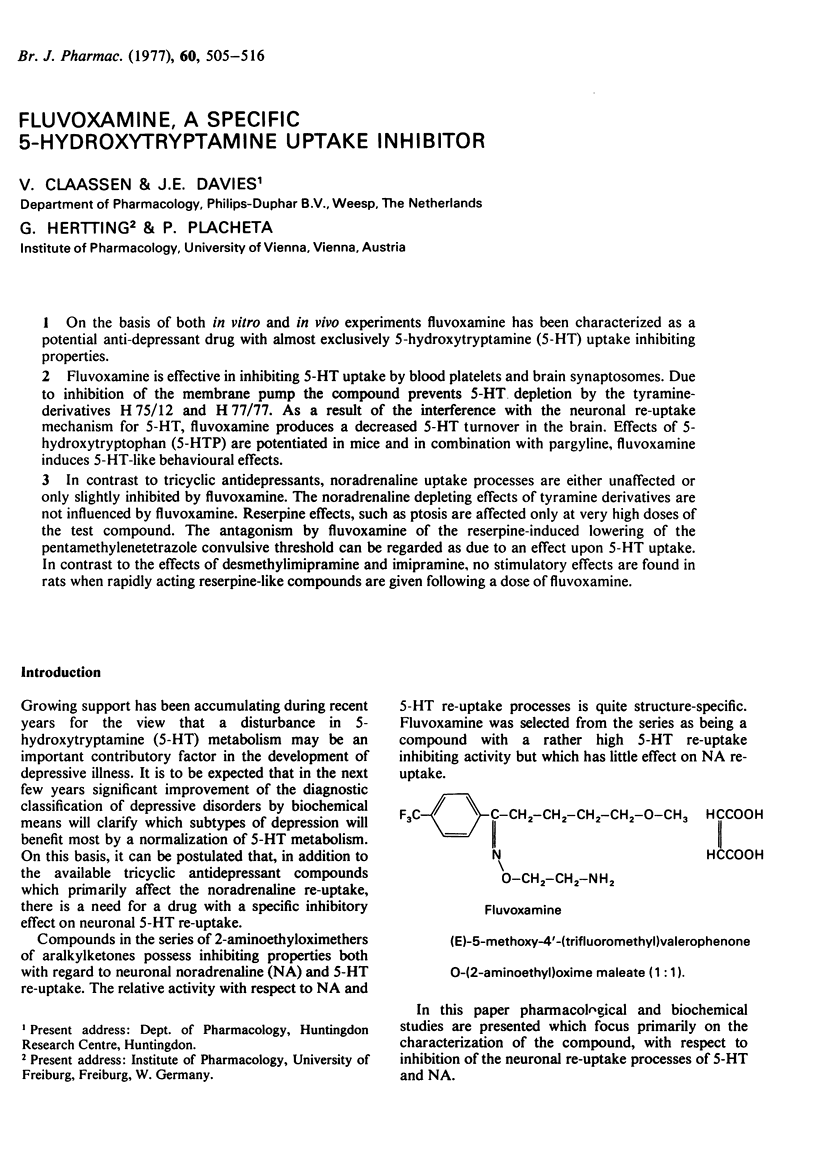
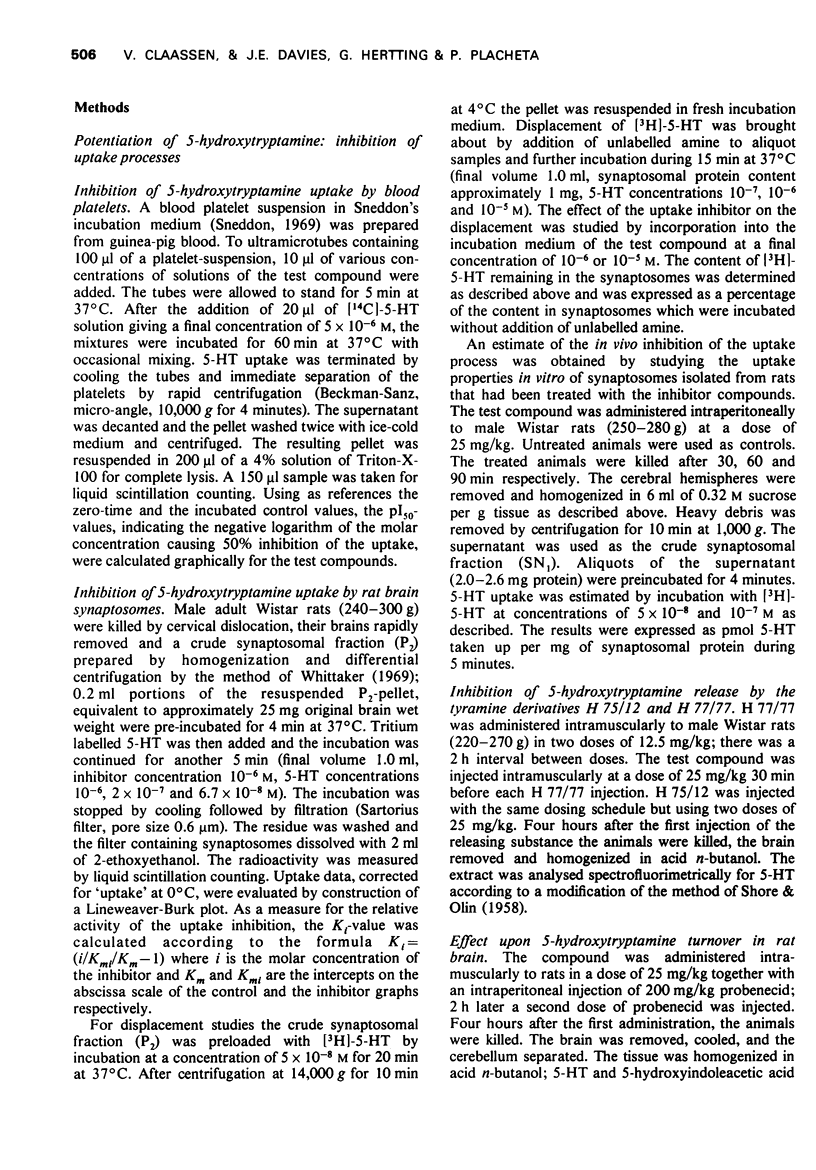
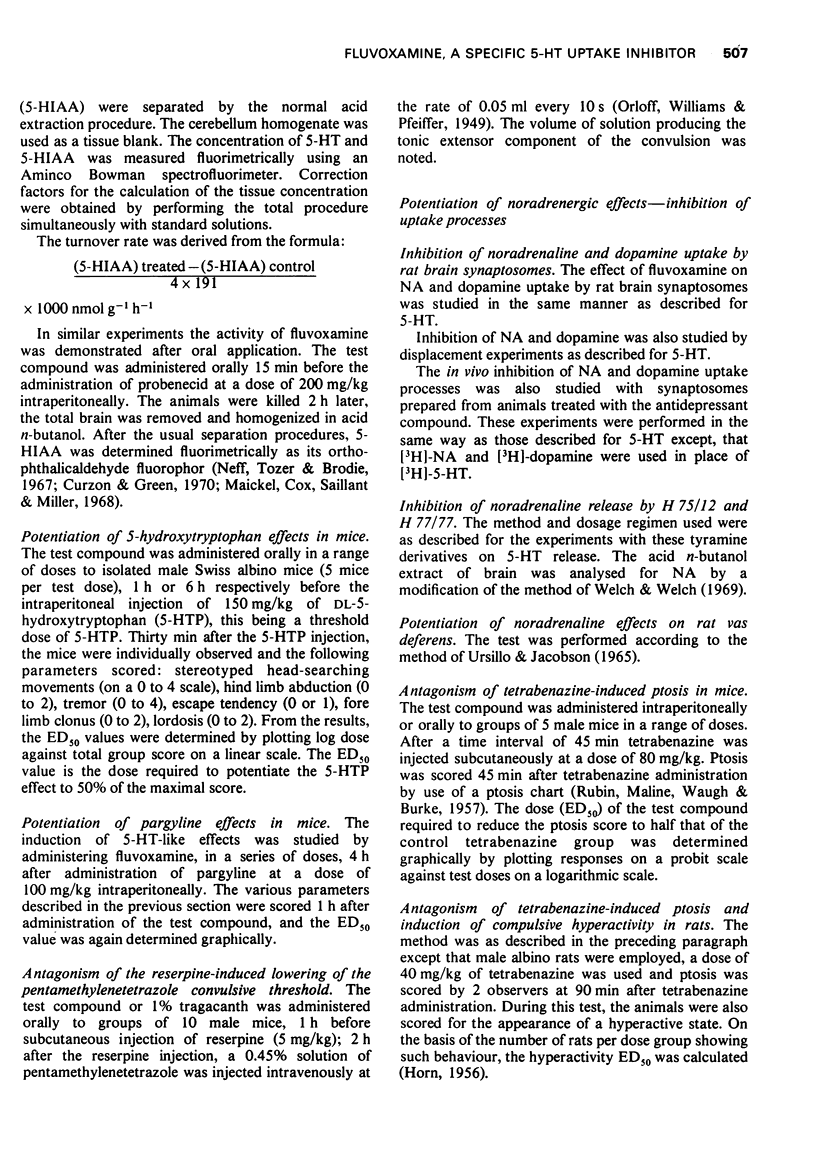
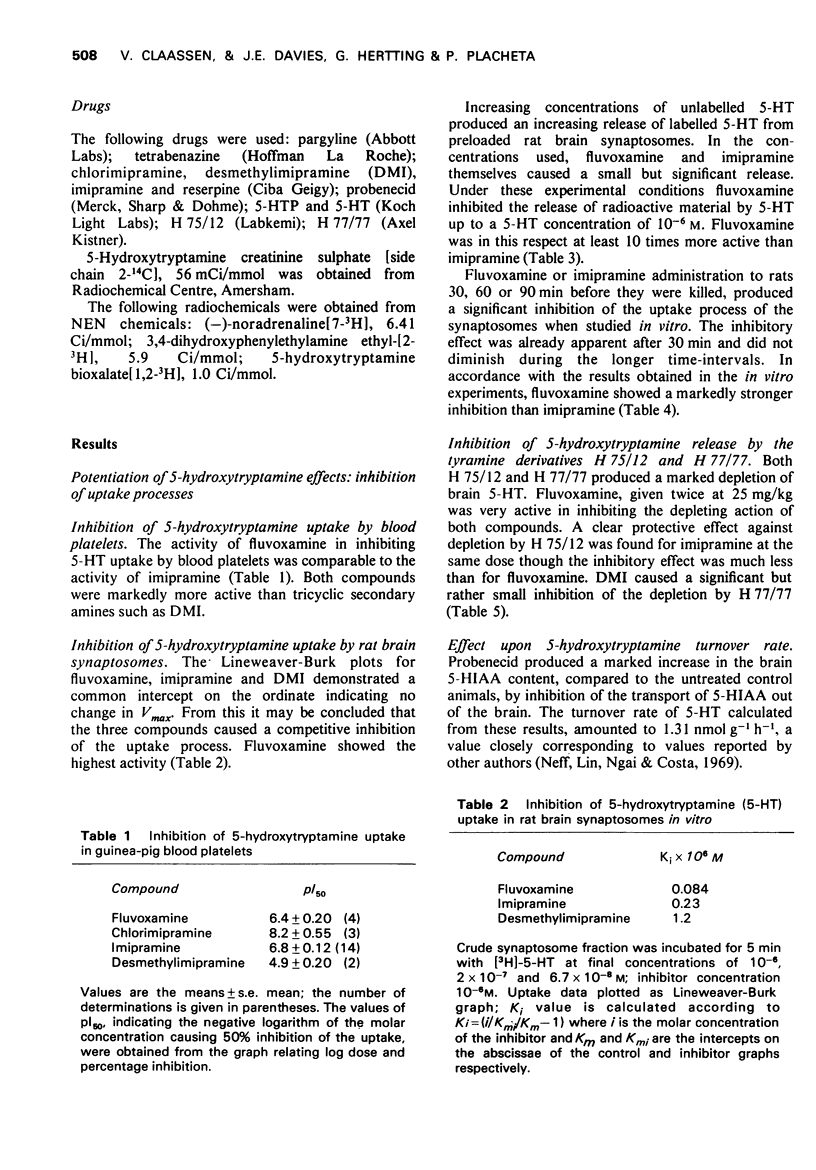
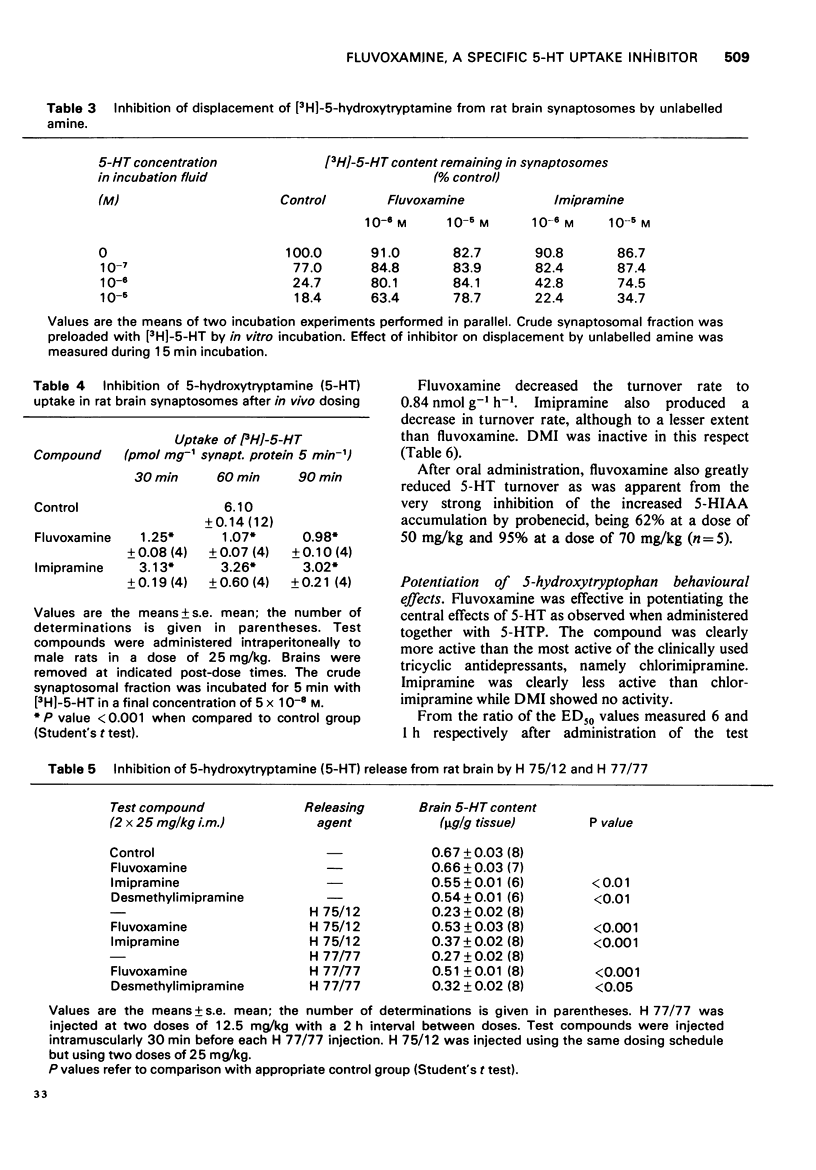
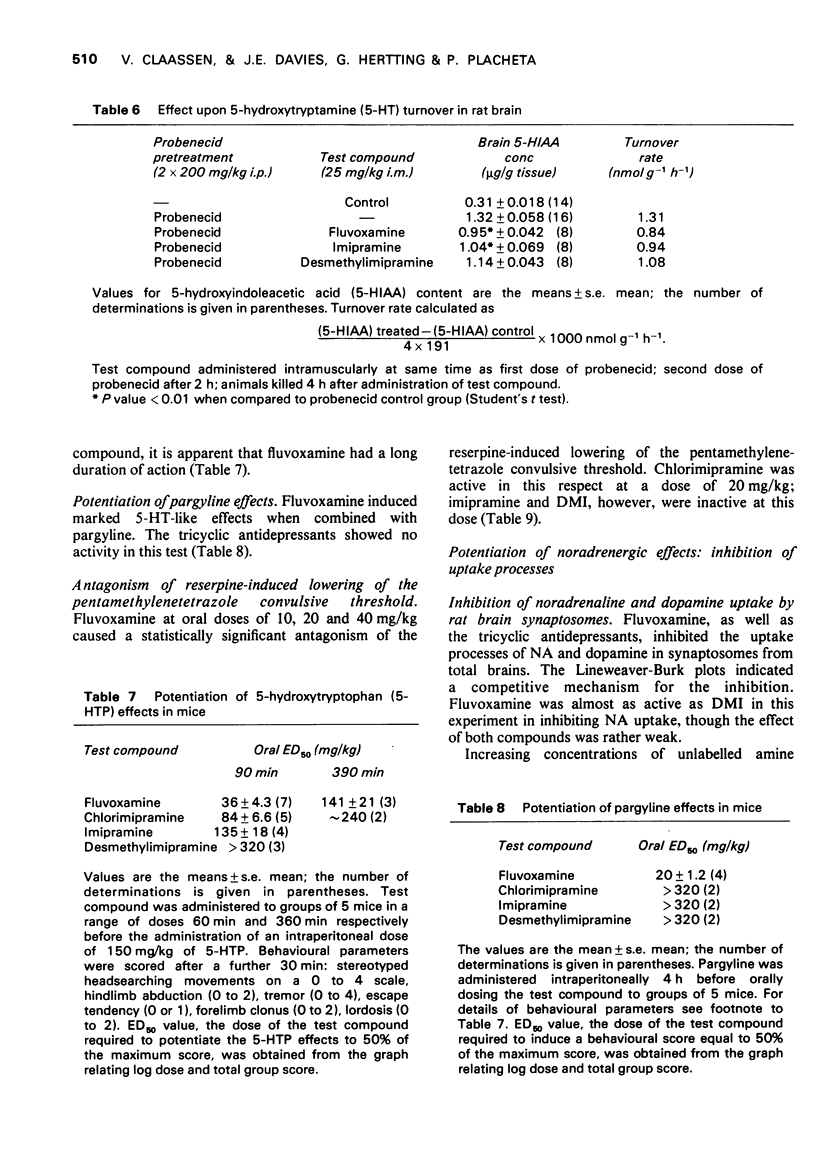
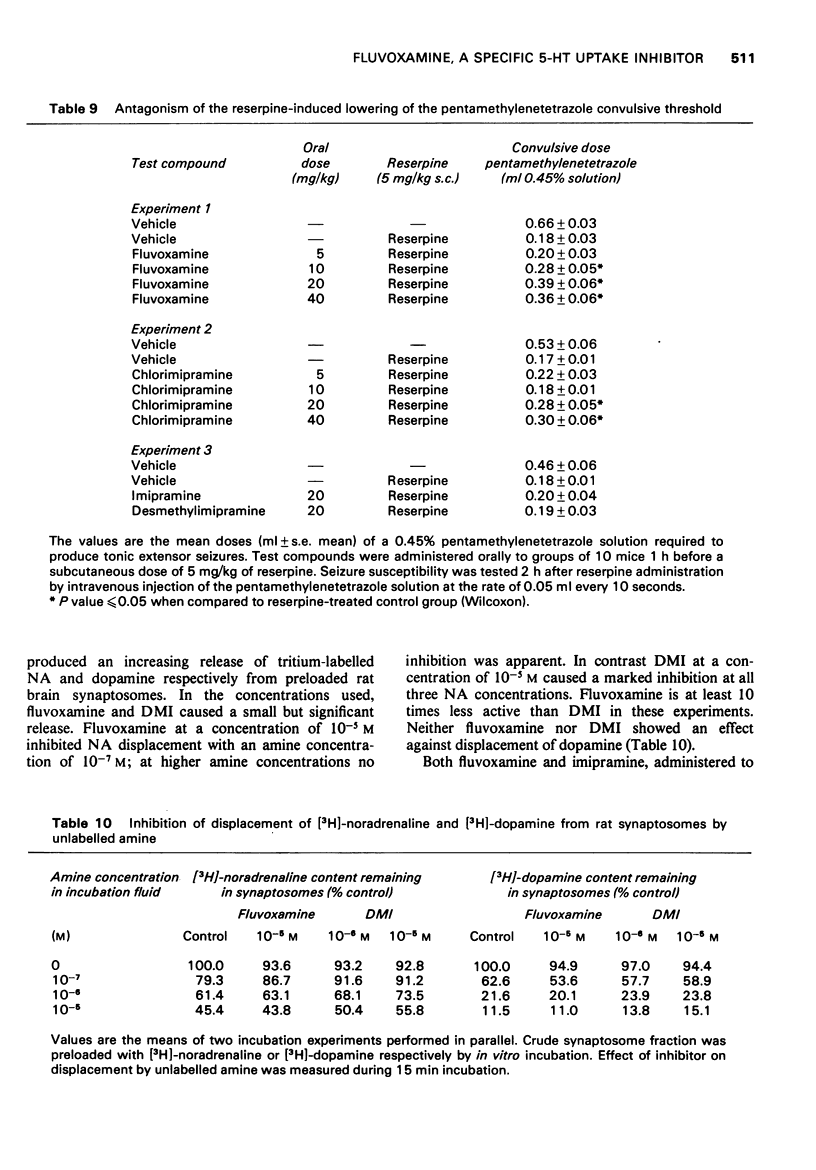
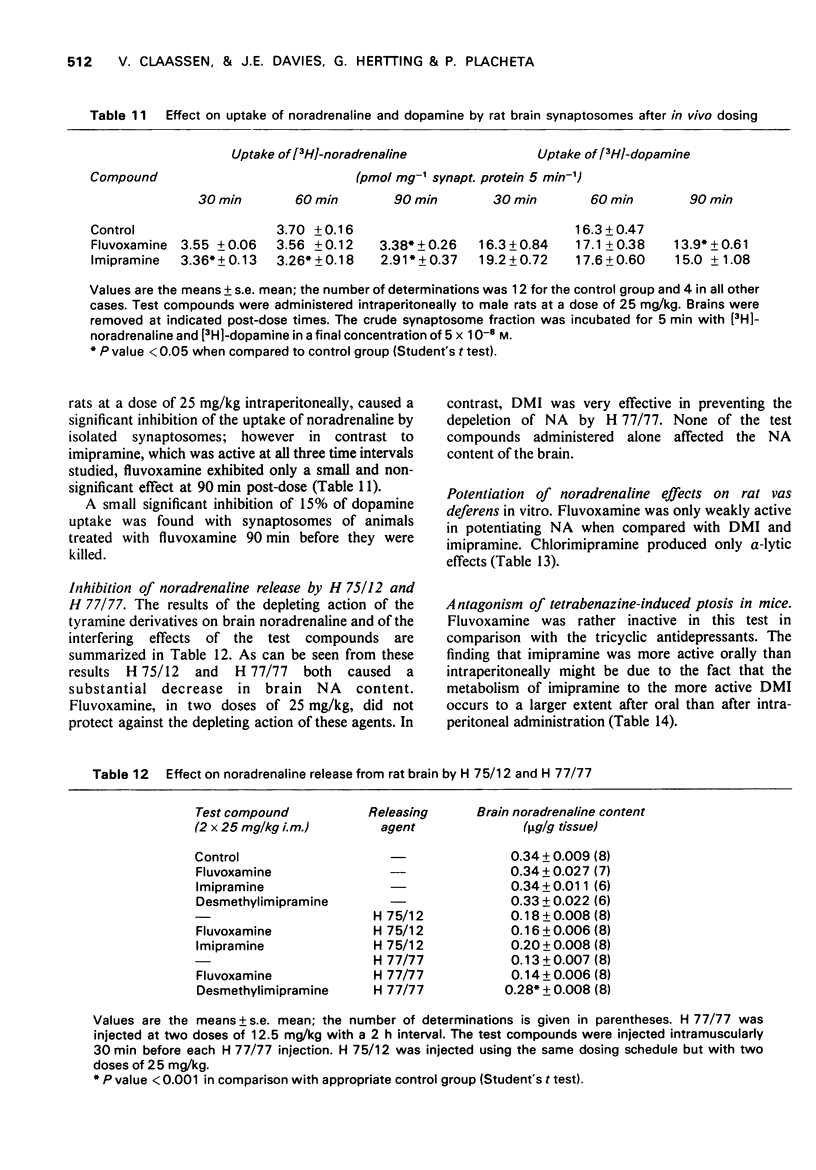
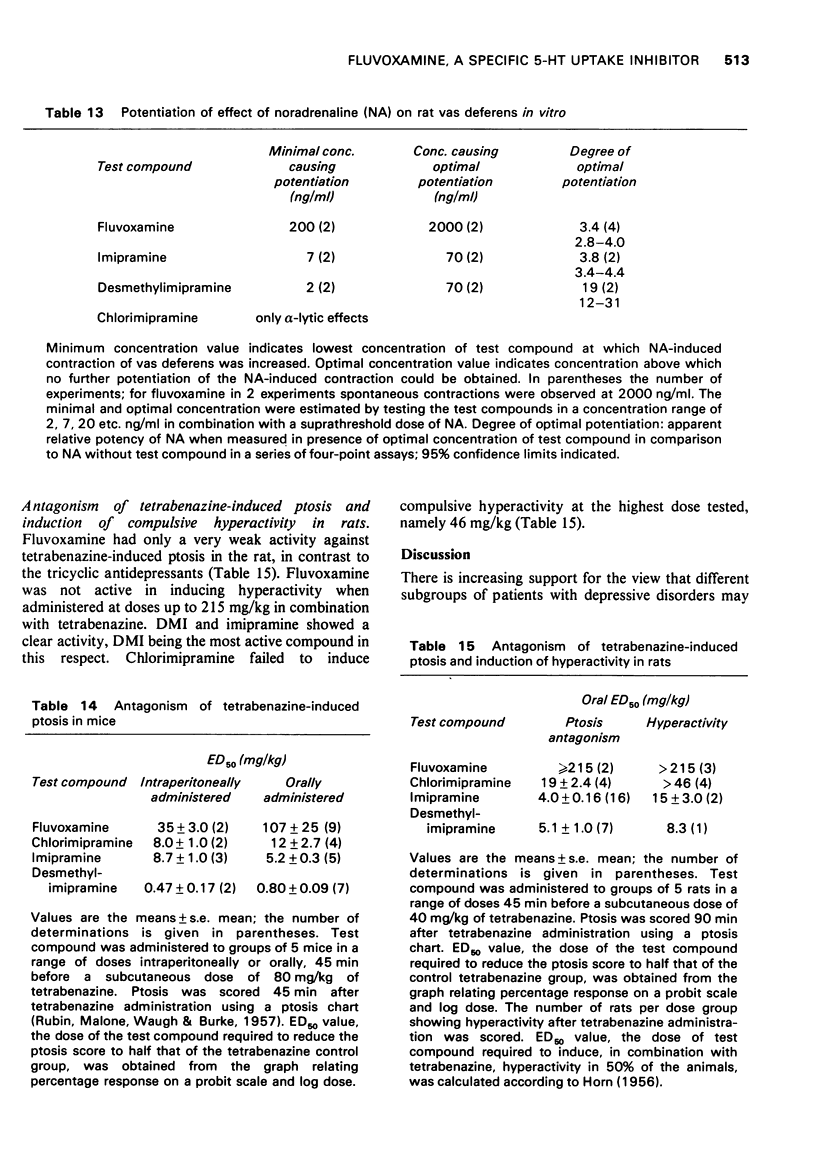
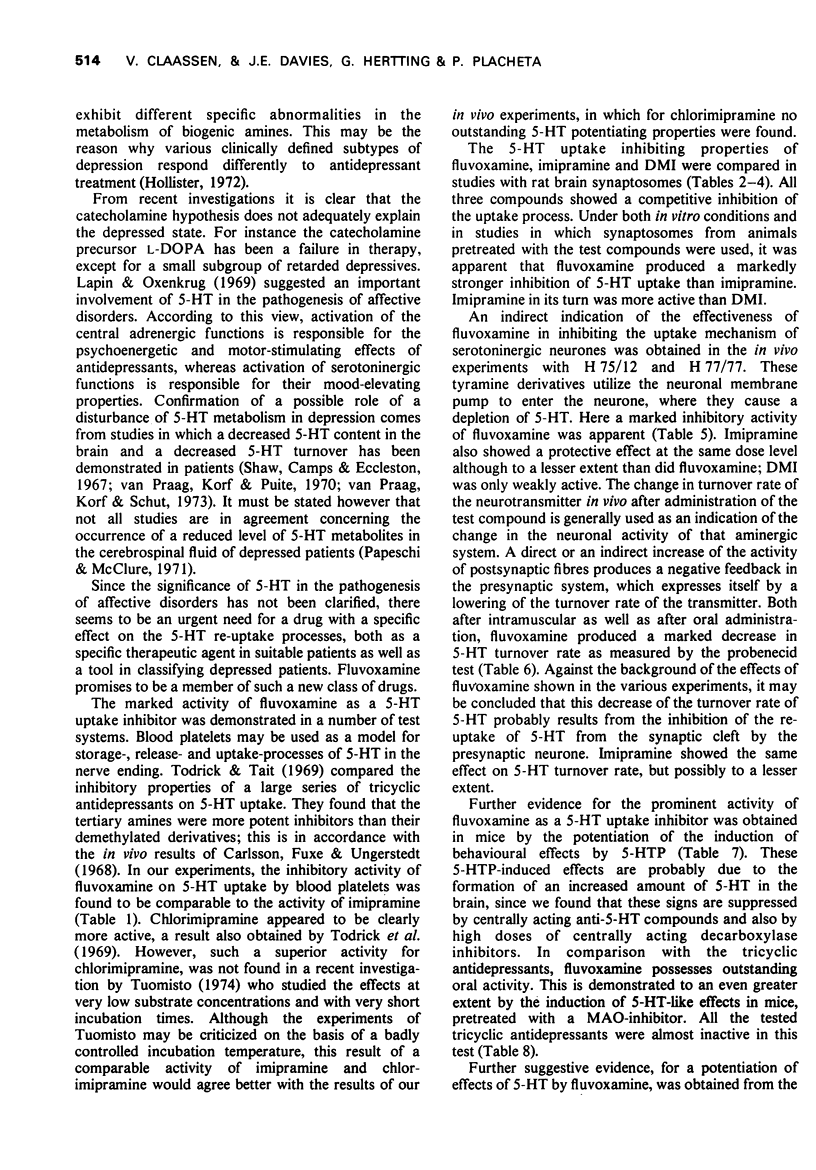
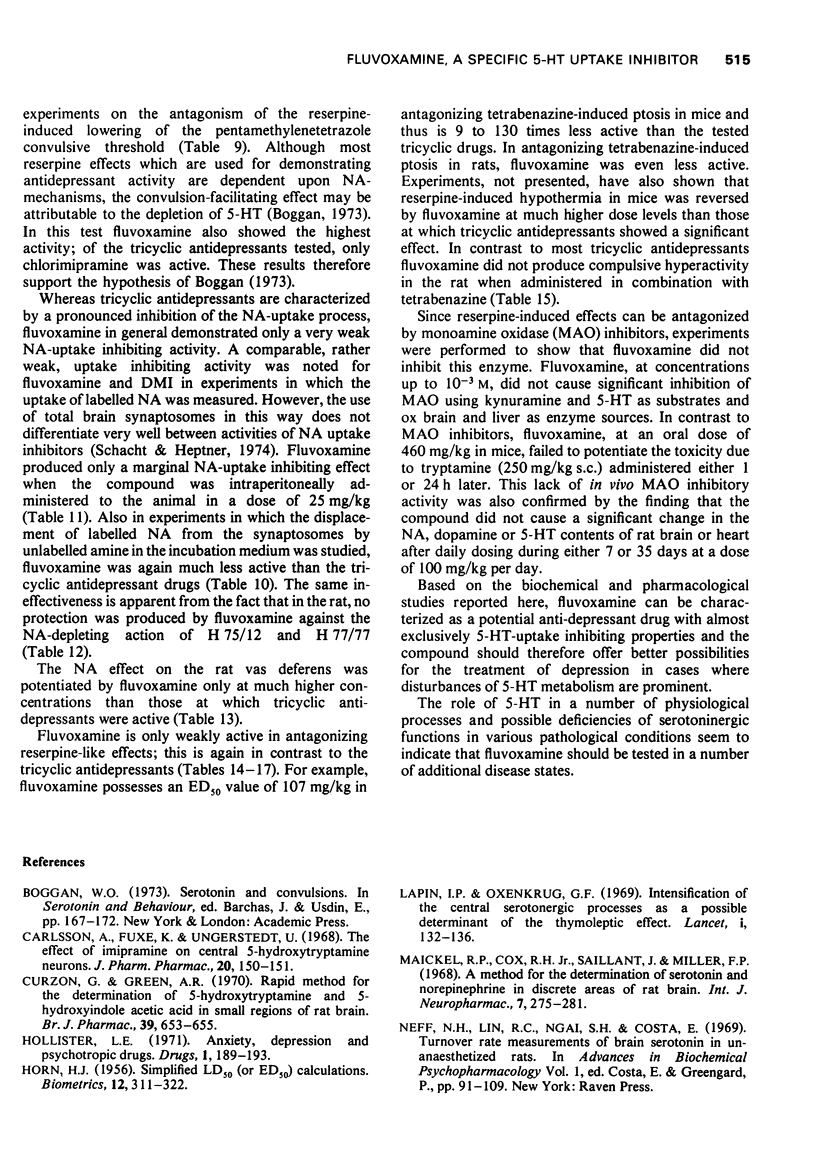
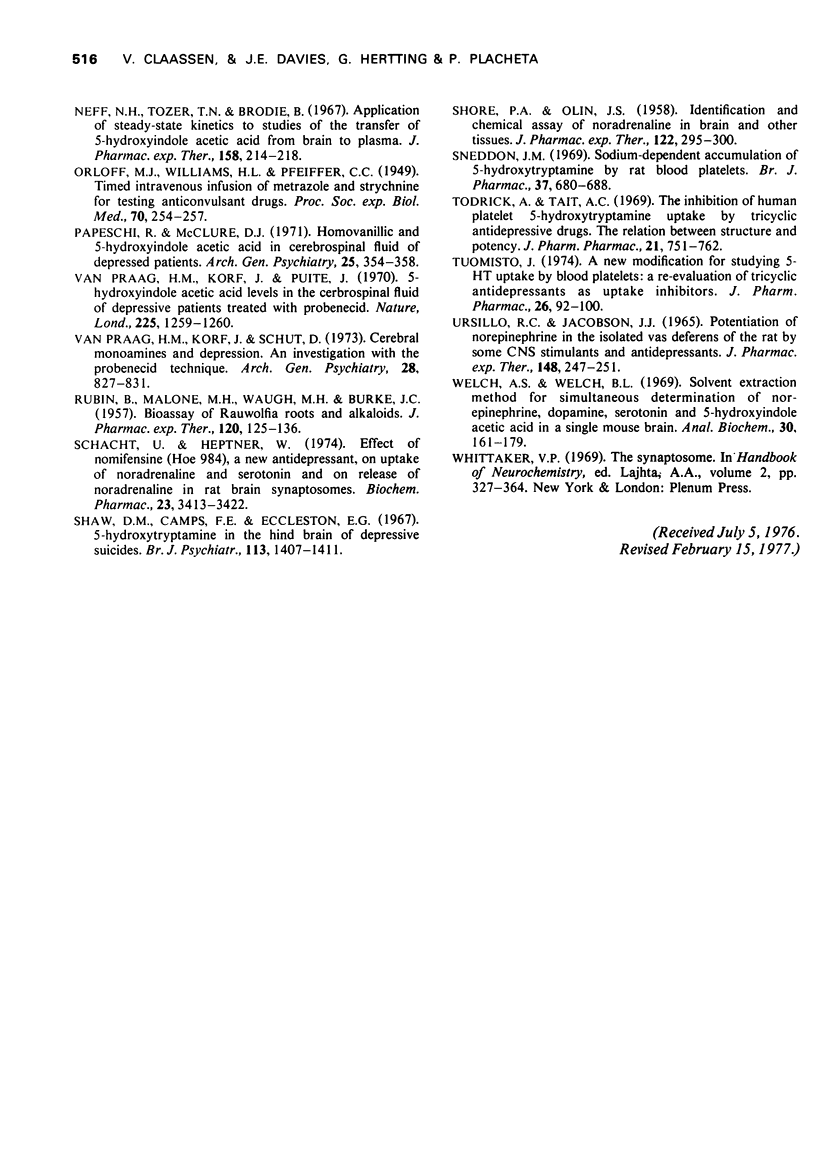
Selected References
These references are in PubMed. This may not be the complete list of references from this article.
- Carlsson A., Fuxe K., Ungerstedt U. The effect of imipramine on central 5-hydroxytryptamine neurons. J Pharm Pharmacol. 1968 Feb;20(2):150–151. doi: 10.1111/j.2042-7158.1968.tb09706.x. [DOI] [PubMed] [Google Scholar]
- Curzon G., Green A. R. Rapid method for the determination of 5-hydroxytryptamine and 5-hydroxyindoleacetic acid in small regions of rat brain. Br J Pharmacol. 1970 Jul;39(3):653–655. doi: 10.1111/j.1476-5381.1970.tb10373.x. [DOI] [PMC free article] [PubMed] [Google Scholar]
- Hollister L. E. Anxiety, depression and psychotropic drugs. Drugs. 1971;1(3):189–193. doi: 10.2165/00003495-197101030-00001. [DOI] [PubMed] [Google Scholar]
- Lapin I. P., Oxenkrug G. F. Intensification of the central serotoninergic processes as a possible determinant of the thymoleptic effect. Lancet. 1969 Jan 18;1(7586):132–136. doi: 10.1016/s0140-6736(69)91140-4. [DOI] [PubMed] [Google Scholar]
- Maickel R. P., Cox R. H., Jr, Saillant J., Miller F. P. A method for the determination of serotonin and norepinephrine in discrete areas of rat brain. Int J Neuropharmacol. 1968 May;7(3):275–281. doi: 10.1016/0028-3908(68)90034-8. [DOI] [PubMed] [Google Scholar]
- Neef N. H., Tozer T. N., Brodie B. B. Application of seady-state kinetics to studies of the transfer of 5-hydroxyindoleacetic acid from brain to plasma. J Pharmacol Exp Ther. 1967 Nov;158(2):214–218. [PubMed] [Google Scholar]
- Neff N. H., Lin R. C., Ngai S. H., Costa E. Turnover rate measurements of brain serotonin in unanesthetized rats. Adv Biochem Psychopharmacol. 1969;1:91–109. [PubMed] [Google Scholar]
- Papeschi R., McClure D. J. Homovanillic and 5-hydroxyindoleacetic acid in cerebrospinal fluid of depressed patients. Arch Gen Psychiatry. 1971 Oct;25(4):354–358. doi: 10.1001/archpsyc.1971.01750160066012. [DOI] [PubMed] [Google Scholar]
- RUBIN B., MALONE M. H., WAUGH M. H., BURKE J. C. Bioassay of Rauwolfia roots and alkaloids. J Pharmacol Exp Ther. 1957 Jun;120(2):125–136. [PubMed] [Google Scholar]
- SHORE P. A., OLIN J. S. Identification and chemical assay of norepinephrine in brain and other tissues. J Pharmacol Exp Ther. 1958 Mar;122(3):295–300. [PubMed] [Google Scholar]
- Schacht U., Heptner W. Effect of nomifensine (HOE 984), a new antidepressant, on uptake of noradrenaline and serotonin and on release of noradrenaline in rat brain synaptosomes. Biochem Pharmacol. 1974 Dec 15;23(24):3413–3422. doi: 10.1016/0006-2952(74)90344-x. [DOI] [PubMed] [Google Scholar]
- Shaw D. M., Camps F. E., Eccleston E. G. 5-Hydroxytryptamine in the hind-brain of depressive suicides. Br J Psychiatry. 1967 Dec;113(505):1407–1411. doi: 10.1192/bjp.113.505.1407. [DOI] [PubMed] [Google Scholar]
- Sneddon J. M. Sodium-dependent accumulation of 5-hydroxytryptamine by rat blood platelets. Br J Pharmacol. 1969 Nov;37(3):680–688. doi: 10.1111/j.1476-5381.1969.tb08506.x. [DOI] [PMC free article] [PubMed] [Google Scholar]
- Todrick A., Tait A. C. The inhibition of human platelet 5-hydroxytryptamine uptake by tricyclic antidepressive drugs. The relation between structure and potency. J Pharm Pharmacol. 1969 Nov;21(11):751–762. doi: 10.1111/j.2042-7158.1969.tb08164.x. [DOI] [PubMed] [Google Scholar]
- Tuomisto J. A new modification for studying 5-HT uptake by blood platelets: a re-evaluation of tricyclic antidepressants as uptake inhibitors. J Pharm Pharmacol. 1974 Feb;26(2):92–100. doi: 10.1111/j.2042-7158.1974.tb09231.x. [DOI] [PubMed] [Google Scholar]
- URSILLO R. C., JACOBSON J. POTENTIATION OF NOREPINEPHRINE IN THE ISOLATED VAS DEFERENS OF THE RAT BY SOME CNS STIMULANTS AND ANTIDEPRESSANTS. J Pharmacol Exp Ther. 1965 May;148:247–251. [PubMed] [Google Scholar]
- Welch A. S., Welch B. L. Solvent extraction method for simultaneous determination of norepinephrine, dopamine, serotonin, and 5-hydroxyindoleacetic acid in a single mouse brain. Anal Biochem. 1969 Aug;30(2):161–179. doi: 10.1016/0003-2697(69)90387-x. [DOI] [PubMed] [Google Scholar]
- van Praag H. M., Korf J., Puite J. 5-Hydroxyindoleacetic acid levels in the cerebrospinal fluid of depressive patients treated with probenecid. Nature. 1970 Mar 28;225(5239):1259–1260. doi: 10.1038/2251259b0. [DOI] [PubMed] [Google Scholar]
- van Praag H. M., Korf J., Schut D. Cerebral monoamines and depression. An investigation with the Probenecid technique. Arch Gen Psychiatry. 1973 Jun;28(6):827–831. doi: 10.1001/archpsyc.1973.01750360053007. [DOI] [PubMed] [Google Scholar]


